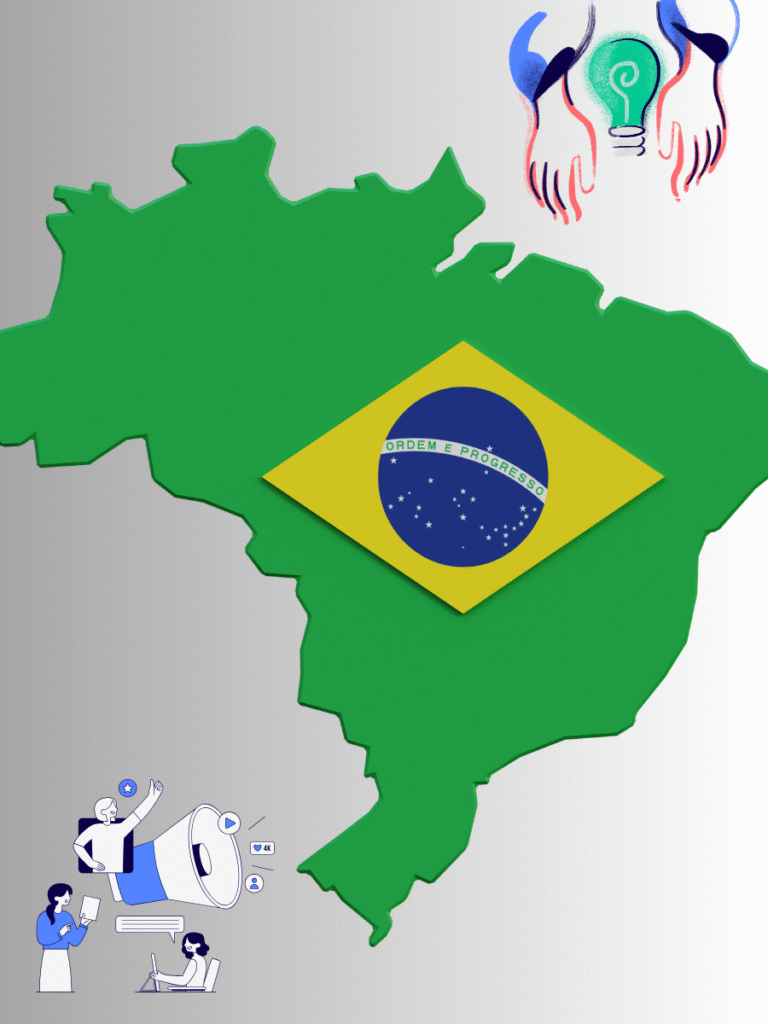Introduction
Brazil has rapidly advanced in intellectual property (IP) law. As one of Latin America’s largest economies, it plays a major role in IP development. The country has innovated through internal legal and institutional reforms.Moreover, it has been shaped by global treaties and economic pressures. Over two centuries, Brazil has been transforming IP law to attract foreign investment. Its legal frameworks support both bio-cultural and sustainable IP rights. Additionally, Brazil promotes biodiversity conservation and sustainable use.
History
The Brazilian Constitution of 1824 did not include specific intellectual property rights. In 1830, Brazil passed its first patent law. Inspired by European ideas, this law granted inventors 14 years of protection. Brazil was among the earliest countries to legislate patent rights.
In 1844, Brazil introduced a more comprehensive industrial property law. It aimed to protect inventions, utility models, and industrial designs. This law marked a step forward in IP regulation. During the 19th century, patent use increased in Brazil. Many foreign companies and immigrants filed patents for new technologies.
By the early 20th century, the Paris Convention for the Protection of Industrial Property was established in 1883, in which Brazil participated as a member. It also joined as a member of the Berne Convention for the Protection of Literary and Artistic Works in 1922. These conventions are still active for IP rights. They form the base for regulating copyrights, patents, and trademarks. A major change came in 1973. The Copyright Law granted moral and economic rights to authors and artists. It aimed to encourage and protect their work. Between 1964 and 1985, Brazil was under military rule. During this time, intellectual property focused more on technology transfer and industrial growth.
After the military rule, the 1988 Constitution of Brazil recognized intellectual property in Article 5, XXVII. It enshrined copyright protection for authors, including both moral and economic rights, and encouraged innovation. The fundamental right includes the freedom of expression, access to culture, and technological development. It also served as a base for its future IP rights, and established the interest of public.
Major evolution
- Trade-Related Aspects of Intellectual Property Rights (TRIPS): One of the major transformations occurred through the establishment in 1994 by the World Trade Organisation and the agreement on Trade-Related Aspects of Intellectual Property Rights. They are obligated to the minimum standard framework for copyright, patents, trademarks, and enforcement.
In 1996, Industrial Property Law – No. 9.279, which is for patent protection up to 20 years for inventions and 15 years for utility models, became an important provision for the patent and trademark regime to develop. This empowered the legality of pharmaceutical products and process patents, which were previously excluded from IP rights. Furthermore, Copyright Law No. 9.610 established a framework for copyrights, including digital rights and related provisions, recognizing protection for software, databases, audiovisual works, and more. - Involvement of the National Institute of Industrial Property: It was established in 1970. It manages patents, trademarks, industrial designs, geographical indications, and technology transfer in Brazil. In the copyright realm, institutional responsibility is shared among several agencies. The National Library Foundation, which handles the registration of copyright, manages the enforcement and royalties and had concerns about coordination and policy enactment.
- Patent Law and Public Health: In 1996, the patent law for pharmaceutical products and their processes was raising concerns about drug prices, as an ingredient for essential medicines.
To address the issue, they adopted Law No. 9.787/1999, which allowed off-patent registrations for local producers to manufacture pharmaceuticals. This led to compulsory licensing in 2007, and there was an issue with the antiretroviral drugs, to reduce their cost and enable their accessibility. - Development in Copyright: Copyright law in Brazil evolved to address new technologies. It supported authors by recognizing online content and digital platforms. The law enabled licensing, royalties, and better enforcement mechanisms. A private body called the Central Office for Collection and Distribution of Copyrights (ECAD) manages royalties. It also handles complaints from authors about inefficiencies and other issues. The government supports the initiatives of policies to promote, digitise, and provide good remuneration to the artists.
Important Judicial Decisions
- ECAD v. Radio Broadcasters (2012–2015)
- Catalysed copyright reform by demanding transparency in collective rights management.
- Triggered greater scrutiny over royalty distribution, setting the stage for more accountable IP institutions.
- Apple Inc. v. Gradiente (2012–2020)
- Reinforced the first-to-file principle in trademark law.
- Exposed the complexities of global branding within domestic IP systems, urging modernisation of registration protocols.
- ABES v. State of São Paulo (2009)
- Differentiated between software as a good and a service, shaping digital IP monetisation.
- Established a foundation for fiscal policy around digital IP, influencing tech-sector growth.
- ADI 5529 – STF (2021)
- Struck down indefinite patent extensions, strengthening legal certainty and fair competition.
- Marked a constitutional realignment of IP laws with public interest and healthcare access at its core.
References
- World Intellectual Property Organisation (1970)- Paris Convention for the Protection of Industrial Property, https://www.wipo.int/treaties/en/ip/paris/
- World Intellectual Property Organisation (1971)-Berne Convention for the Protection of Literary and Artistic Works, https://www.wipo.int/treaties/en/ip/berne/
- World Intellectual Property Organisation (1994)- Agreement on Trade-Related Aspects of Intellectual Property Rights (TRIPS), https://www.wipo.int/wipolex/en/treaties/details/231
- Constitutional Amendments of Brazil.
- ECAD v. Radio Broadcasters (2012–2015)
- Apple Inc. v. Gradiente (2012–2020)
- ABES v. State of São Paulo (2009)
- ADI 5529 – STF (2021)







